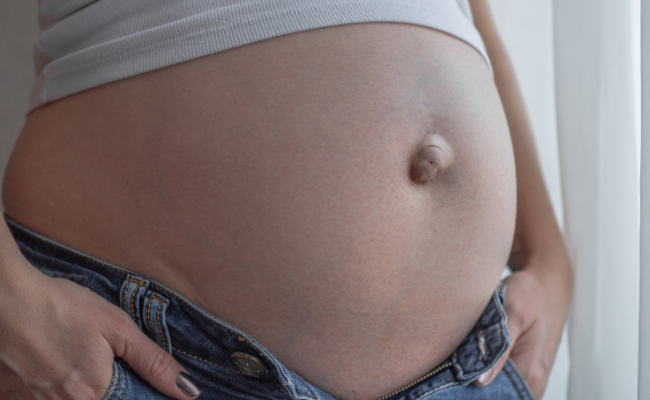How to Treat Umbilical Hernia?
- January 23, 2024
- No Comments

What is an Umbilical Hernia?
An umbilical hernia is characterized by the presence of a noticeable bulge or lump near the belly button (umbilicus). This occurs when a section of the small intestine, accompanied by fat or fluid, forms a sac that protrudes through a weakness or opening in the abdominal wall muscle. While commonly observed in newborns, infants, and young children, it's important to note that adults can also develop umbilical hernias.
This condition manifests as a result of weakened abdominal muscles, allowing abdominal contents to protrude, creating a visible or palpable bulge. While often harmless in infants and children, requiring only monitoring, adults with umbilical hernias may require medical attention or surgical intervention based on the severity of the condition.
Why Does Umbilical Hernia Occur?
Understanding the causes of umbilical hernias is essential in managing and treating the condition. In infants, this type of hernia often develops when there is an incomplete closure of the abdominal muscles around the umbilical cord after birth. The resulting weakness allows a portion of the abdominal lining to push through, creating a visible bulge.
In adults, several factors contribute to the development of umbilical hernias. Obesity, pregnancy, multiple pregnancies, and previous abdominal surgeries can increase the risk of weakened abdominal muscles, making it more likely for a hernia to occur. Persistent strain on the abdominal muscles, coupled with these risk factors, can exacerbate the weakness over time, leading to the protrusion of abdominal contents.
How to Identify Umbilical Hernia?
The identification of an umbilical hernia is typically straightforward due to the visible bulge or lump near the navel. This bulge becomes more apparent during activities that increase intra-abdominal pressure. While the majority of umbilical hernias are not painful, the presence of a noticeable lump can cause concern for many individuals.
Medical professionals diagnose umbilical hernias through a physical examination. The healthcare provider may ask the patient to cough or strain during the examination to observe the hernia's response to increased pressure. In some cases, imaging studies such as ultrasound or MRI may be recommended to obtain a more detailed view of the hernia and surrounding structures.
Treatment Solutions for Umbilical Hernia:
- Watchful Waiting: For small and asymptomatic umbilical hernias, a watchful waiting approach may be recommended. This involves monitoring the hernia for any changes and addressing it if it becomes larger or symptomatic over time. Regular check-ups with a healthcare provider are essential for tracking the hernia's progression.
- Lifestyle Modifications: Lifestyle changes play a crucial role in managing umbilical hernias. Individuals are advised to maintain a healthy weight, as obesity can contribute to the development and worsening of hernias. Avoiding heavy lifting and practicing proper body mechanics can help reduce intra-abdominal pressure, alleviating symptoms and preventing further strain on weakened abdominal muscles.
- Abdominal Binders: Wearing an abdominal binder or supportive undergarment is a non-invasive option that provides external support to the weakened abdominal muscles. This support can help alleviate symptoms and reduce the protrusion of abdominal contents, particularly during activities that may increase intra-abdominal pressure.
- Surgical Intervention: In cases where the umbilical hernia is large, symptomatic, or poses a risk of complications, surgical repair may be recommended. The surgical procedure involves closing the opening or weakness in the abdominal wall and reinforcing it with sutures or a synthetic mesh. This intervention is highly effective and is often the preferred option for preventing complications and ensuring a lasting solution.
Benefits of Treating Umbilical Hernia:
- Symptom Relief: Treatment options, including lifestyle modifications and surgical intervention, provide relief from symptoms associated with umbilical hernias. Individuals often experience a reduction in the appearance of the bulge and a decrease in any discomfort or pain.
- Prevention of Complications: Timely treatment of umbilical hernias can prevent potential complications, such as strangulation. Strangulation occurs when the blood supply to the herniated tissues is compromised, leading to severe pain and potential tissue damage. Surgical repair eliminates the risk of complications, ensuring the hernia does not worsen over time.
- Improved Quality of Life: Successfully treating umbilical hernias contributes to an improved quality of life for affected individuals. Relief from the physical and emotional impact of a visible bulge enhances self-esteem and overall well-being.
- Reduced Risk of Recurrence: Surgical repair of umbilical hernias is highly effective, with a low risk of recurrence. This means that individuals who undergo hernia repair can generally expect a long-term solution to their condition, reducing the likelihood of the hernia returning.
Comments (0)